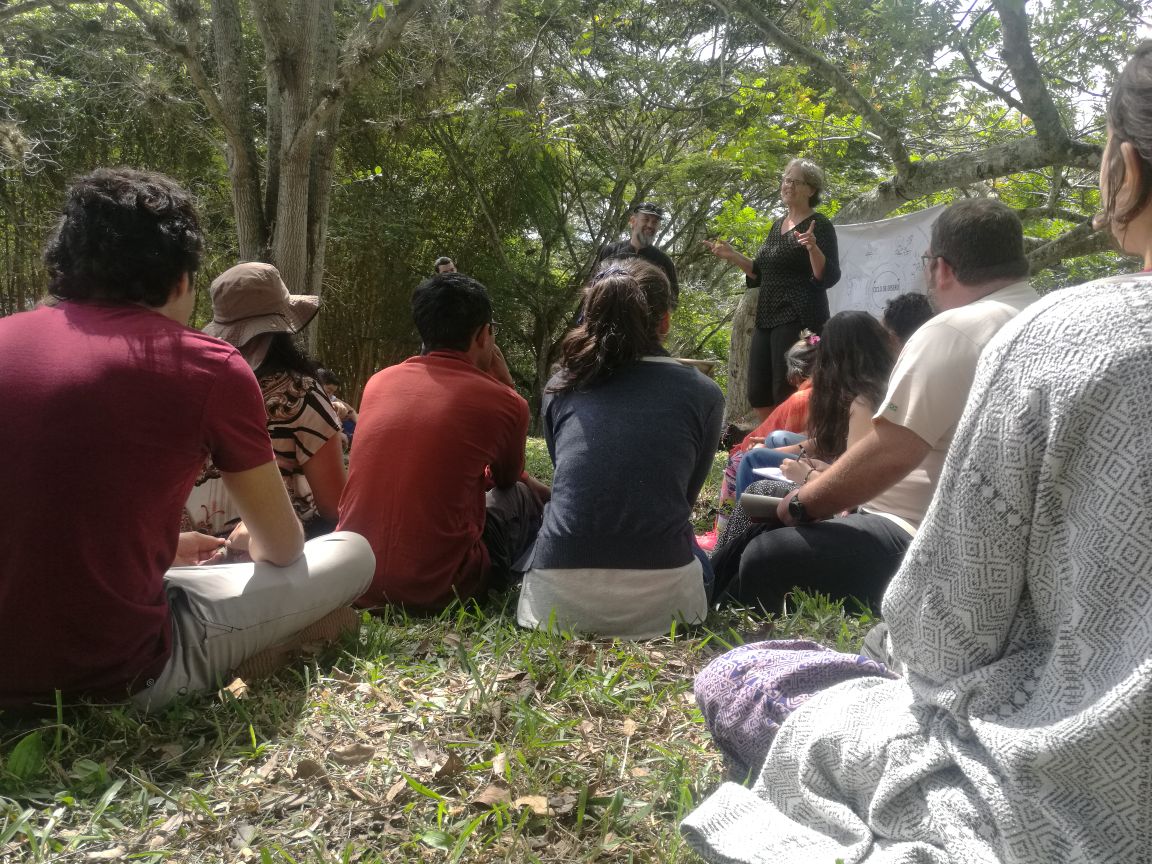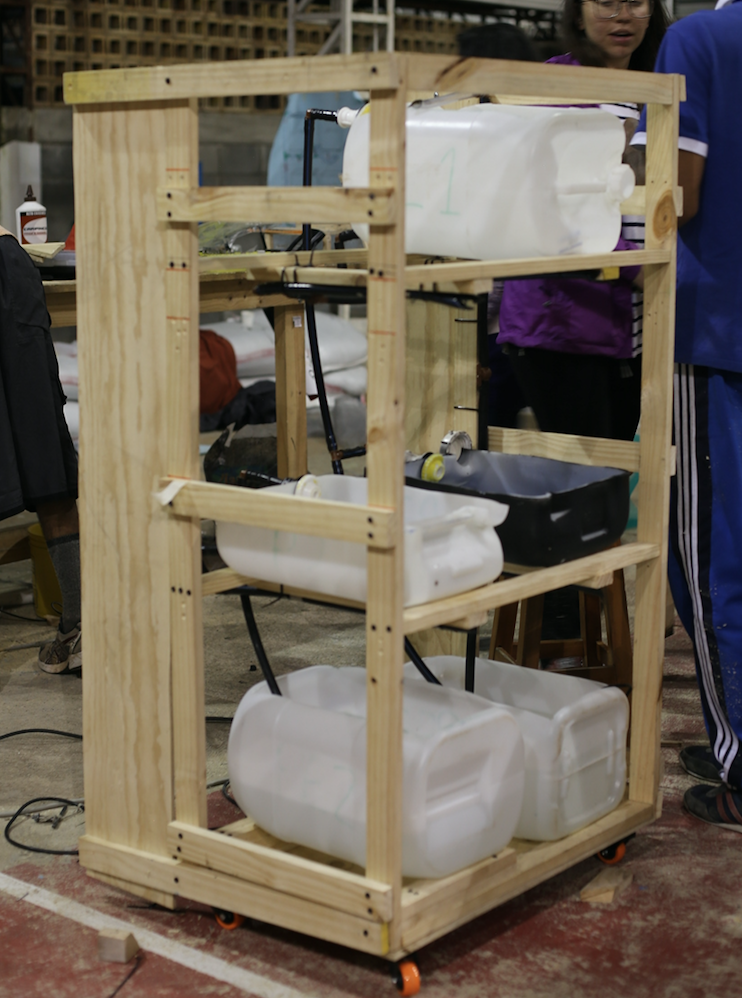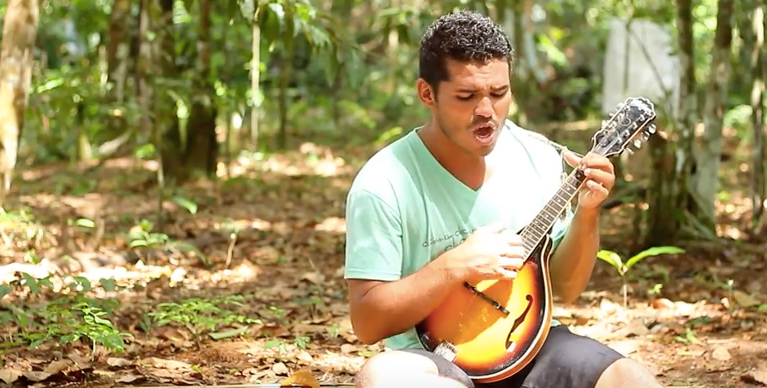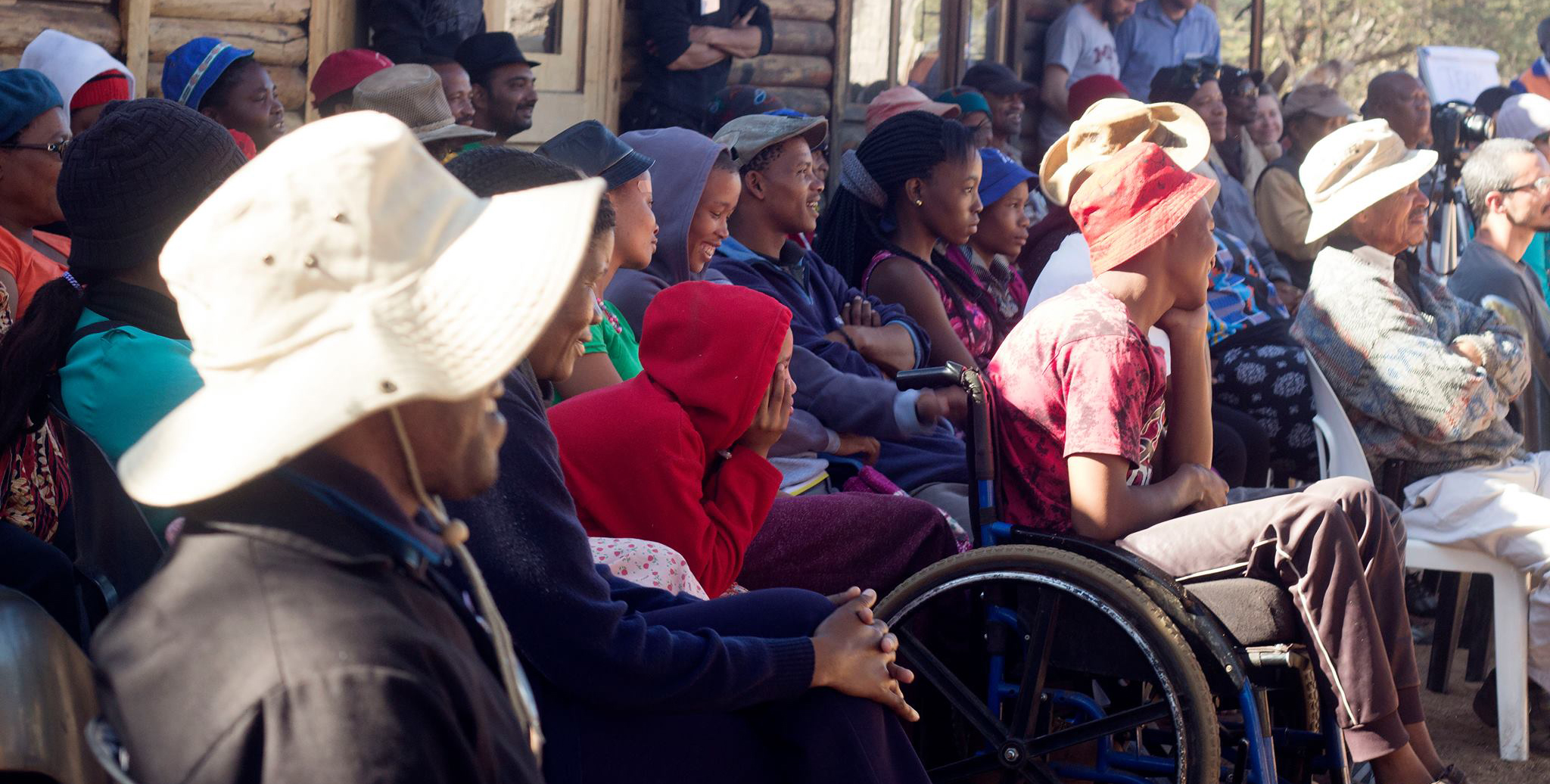The Butterfly Effect: Tackling Climate Change in Fusagasuga, Colombia

Para la versión en inglés, haga clic aquí.
.png)
Small changes can have large consequences. Sometimes referred to as the “butterfly effect”, the idea that something so miniscule and small can have very impactful effects is often used as a metaphor for human interactions. The International Development Design Summit (IDDS) Climate Change Adaptation – which took place from June 30 – July 17 in Fusagasuga, Colombia – embodies the “butterfly effect”.
Climate change, and its effects, is something that is very complex and it often feels out of our individual control. The beauty of this IDDS is that it tackled a very complicated issue by focusing on the individual – the butterfly, if you will. Through a methodology that incorporates empathy, co-creation, and opening up one’s mind to innovation and creativity, 58 participants from 12 countries focused on finding solutions to local community issues that have emerged due to climate change.
Here is what they created!
Aprenat (Rainwater collection and storage system)
APRENAT is an association of approximately 51 organic coffee producing campesino families, located in the municipality of Tibacuy, alongside of mountain of Quinini. As part of their vision, they believe that their production of coffee should be based on the conservation of their land’s unique biodiversity and the interactions of these systems. However, due to some of the recent effects of climate change, particularly erratic rainfalls, about 30% of the association does not have access to reliable and consistent sources of water. This leads to difficulties in the cultivation, production and transformation of coffee.
During the summit, the IDDS team (which consisted of six members including one community representative) aimed at co-creating a system of rainwater collection and storage, framed in improving the quality of life for the community at large. Using a mixture of guadua bamboo, PVC pipes and water-cooler bottles, the system harvests rainwater for both production purposes and family consumption. The final design aimed to be compatible with the environmental and social mission of APRENAT, as well as being replicable for all families which are affected by the problem.
Areneros (Canoe repair and transformation)
The Areneros community finds themselves located along shores of the upper basin of the Magdalena river. Their main economic activity revolves around extracting and selling sand from the Island of the Sun. Unfortunately, due to the effects of climate change, principally with erratic rising of the river, the local Areneros find their livelihoods altered.
The IDDS team (which consisted of seven members, two of whom were local community representatives) identified an additional opportunity for economic stability in another one of their assets: their canoes. Through co-creation, they developed a system that lightly transformed the canoes to promote ecological tourism during the summer seasons. Using aluminum poles and a protective, light covering, they were able to create something that is easily detachable and retractable – ultimately protecting the river bed and the sand banks, and most importantly giving the families of the community a new economic alternative.
Areneros Jr. (Floating platform)
Much like the previous project, the community of the Young Areneros (which consists of approximately 20 young members of the community) rely heavily on sand extraction. After two visits and various consultations, the IDDS team (which consisted of five members including one community representative) identified that the community wanted access to a different form of economic stability when the river prohibited sand excavation.

The team co-created a floating device from guadua bamboo, hermetic tanks and threads from recycled plastic bottles to promote ecological tourism. The floating devices are able to withstand an approximate weight of 1,500 pounds and have dimensions of 67 square feet – meaning that multiple people can embark upon them at a time. All of these materials are readily available to the community, maximizing the potential for replication at a low cost.
Asopromes (Weed excavator)
ASOPROMES is a cooperative of 26 families of agro-ecological producers who bring their organic and ecologically friendly products to market every Saturday in the nearby city of Fusagasuga. Due to climate change, rains have increased drastically over the last years, which has resulted in excessive weed growth. As a result of this, manual weed extraction absorbs the majority of the farmers’ time, leading them away from the cultivation of their produce. Conventionally, the best alternative is to use agrochemicals to circumvent this issue – but the association stands firm with their organic means of production.

As such, through co-creation, the IDDS team (consisting of six members including one community representative) developed a weed excavator. The prototype consists of a jagged cyclone with an adaptable handle, which was designed for comfortable use over extended period of time. Essentially, it is intended to facilitate weed excavation, promote soil rejuvenation and decrease manual labor time.
Finca el Dorado (Vertical farming with rainwater drip-irrigation)
Finca el Dorado is a small single-family farm that is primarily dedicated to the cultivation of coffee, in addition to other horticultural products. Similar to the other farms in the region, el Dorado is increasingly facing inconsistent rains, which has resulted in lower yields.
The IDDS team (which consisted of six members including the owner of the farm), through co-creation, sought to generate an alternative agricultural production system that optimized the use of water, inhabited a small space and used appropriate low-cost technologies in efficient ways to improve food security and resilience to climate change. The prototype consisted of a covered modular system of vertical orchards, which collected rainwater, and distributed the water thorough drip irrigation. The team calculated that the using such a system would increase yields by approximately 2.7 – 4.4 times as much in comparison to traditional farming practices for the same area of land.
Pescadores (Bait cultivation system)
Local fishermen of the river Magdalena in Girardot, Colombia in recent years have found their livelihoods affected by climate change in many ways. One of the socio-environmental effects upon the river is a decreased cultivation of bait.

As such, the IDDS team (consisting of five members including one local fisherman) designed a home-based bait cultivation system. The system incorporates the principles of aquaponics and vermiculture to ensure that provision of bait can be consistent throughout the year – and non-reliant upon the river. The system allows for various forms of bait – including small fish, worms and larvae. In addition to consistent access to bait – the system, which consists of wood, organic material and a simple electronic water pump (all of which is readily available in the community) – can be sold, creating a new potential source of income for the community.
Punto Verde (Tumbling fertilizer producer)
Punto Verde is a family-owned organic restaurant, with a philosophy influenced by the concept of agroecology. In addition, they help promote an agro-eco-tour where they highlight other farms and services in the area. In line with their vision, they believe it is very important to recycle and reuse everything possible. For that reason, bochashi (fermented, organic fertilizer) is positioned as an interesting alternative to agrochemicals for the community. Bochashi however is quite difficult to produce – requiring a lot of rotating, at certain temperatures and humidity, thereby exerting a lot of physical effort.

Through co-creation, the IDDS team (which consisted of five members including one community representative) created a device that facilitates the processing of bochashi. It can hold a capacity of up to approximately 440 pounds, and more importantly, it can be used easily by anyone, including minors – thereby mitigating the difficult physical effort associated with its production.
Tierra Libre (soil and bio-fertilizer measurement kit)
Tierra Libre is farm school that promotes knowledge sharing, agro-ecological training, environmental education and participatory action research. The community has a bio-factory where production and research of organic resources makes it easier to transition from conventional farming to organic farming. Coincidentally, approximately 40% of the surrounding territories have some degree of soil and nutrient degradation, thereby decreasing productivity.
Considering this dynamic, the IDDS team (which consisted of six members including one community representative), design a low-cost, user friendly measurement kit. The kit measures the temperature and humidity in soil, bio-fertilizers, liquids and solids (such as bocashi or mountain microorganisms). Using a simple, micro-computer and copper fibers, the prototype allows monitoring and control of the multiple variables which affect soil degradation. In addition, the device was created through participatory research, with the intent being to involve the farmer in the study of his/her soil, understanding the components and being able to replicate the technologies.
Totumos (Diversifying the insides of the totumo fruit)
ASOMACREGYR is an association of creative artisans in the Girardot region of Colombia. It currently consists of fifteen female heads of household, five of which make handicrafts as their main source of income. They mainly work with the totumo fruit, transforming the outside shell into cups, bowls and other handicrafts. However, the pulp and seeds (accounting for about 95% of the fresh weight) is usually dumped without any treatment, generating methane in its degradation.
For this reason, the IDDS team (which consisted of five members including one community representative), designed two objects that attempted to take advantage of the insides of the totumo fruit – thereby creating by-products of the handicrafts. The first machine worked as a press that extracted the fiber from the pulp and guts. The second machine maneuvered the fiber into a functional paper-like material. Ultimately, the project intended to have a positive impact on the environment, in addition to diversifying the sources of income for the artisans.
Waia Sie (Versatile weed-whacking tools for Ojo de Poeta)
Waia Sie is a agro-ecological reserve that is located in the municipality of Silvania, Colombia. It is a collaborative project between 6 families that seeks to promote agroecology, permaculture and biodiversity restoration (particularly in regards to the Bosque de niebla). Given that invasive species are the second leading cause of biodiversity loss in the world, Waia Sie finds their territories increasingly falling victim to a particular species: Ojo de Poeta (Thunbergia alata Bojer ex Sims).

Through co-creative methods, the IDDS team (which consisted of five members including one local community representative) designed two different tools to facilitate in the control and extermination of Ojo de Poeta. The tools have extendable hooks, and different systems of retraction (through strings and belts). Even though both tools use different mechanisms to extract the Ojo de Poeta, in contrast with the traditional methods, they both extract more of it, over less time and with less effort.
---
With ten local community representatives (including campesinos, coffee farmers, organic producers, fishermen and sand cultivators) forming the nucleus of the ten teams, the summit culminated in physical prototypes that seek address these local issues. The prototypes vary in scale, level of impact and complexity – but all were focused on issues that have their roots in climate change.
The most interesting takeaway, however, may not be the prototypes themselves. The participants had their creative and innovative passions rejuvenated. Local community members became empowered in ways they never expected. A family was created – from people coming from all different corners of the world. Perhaps these individuals, this IDDS Climate Change Adaption family, are embodying “butterflies”.














